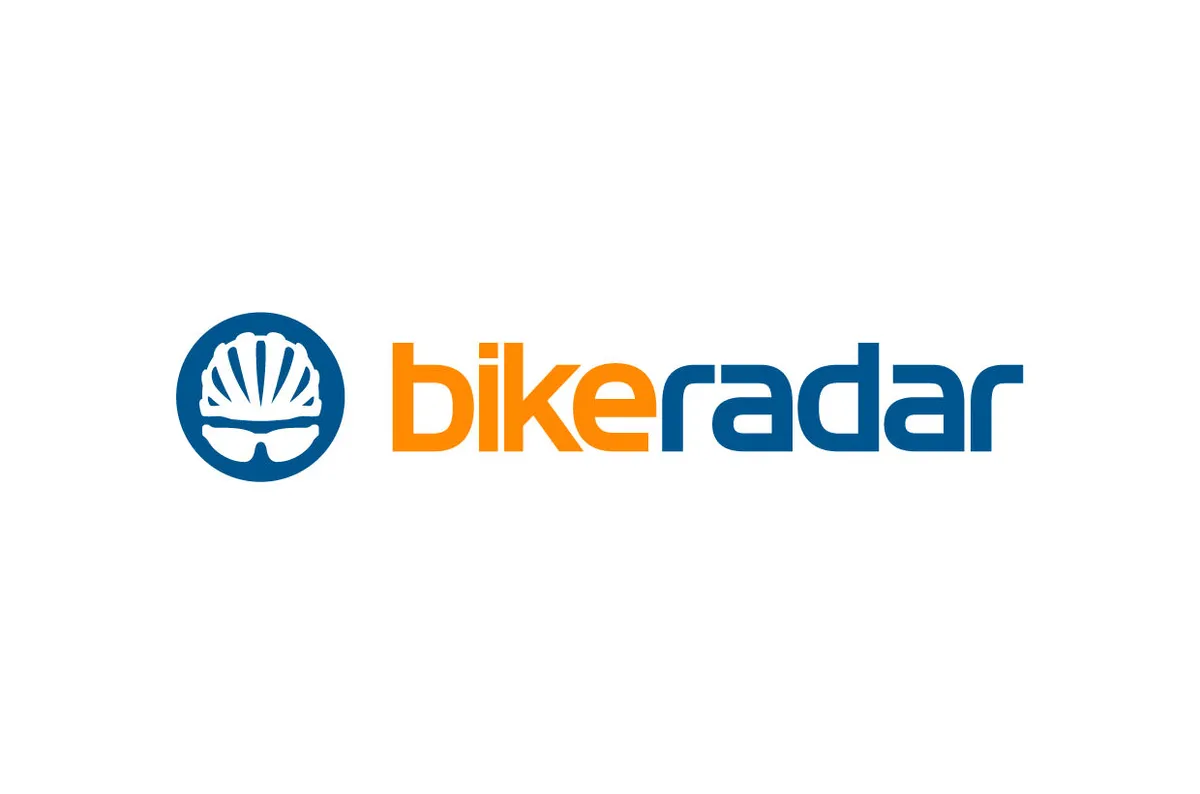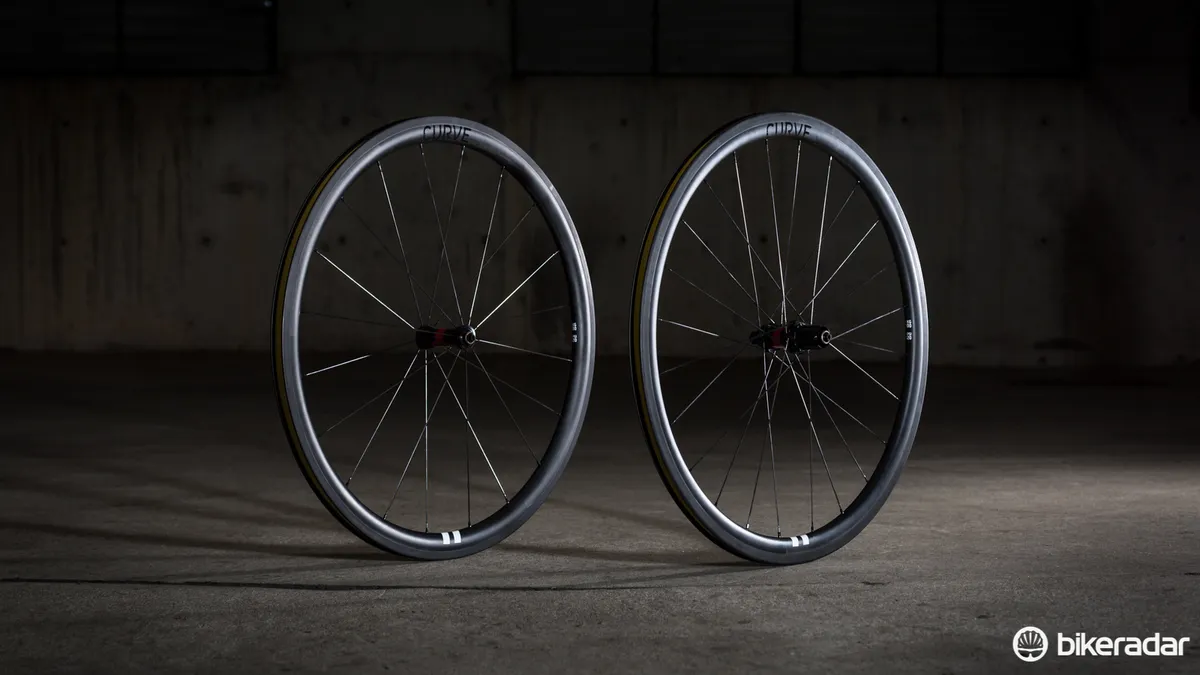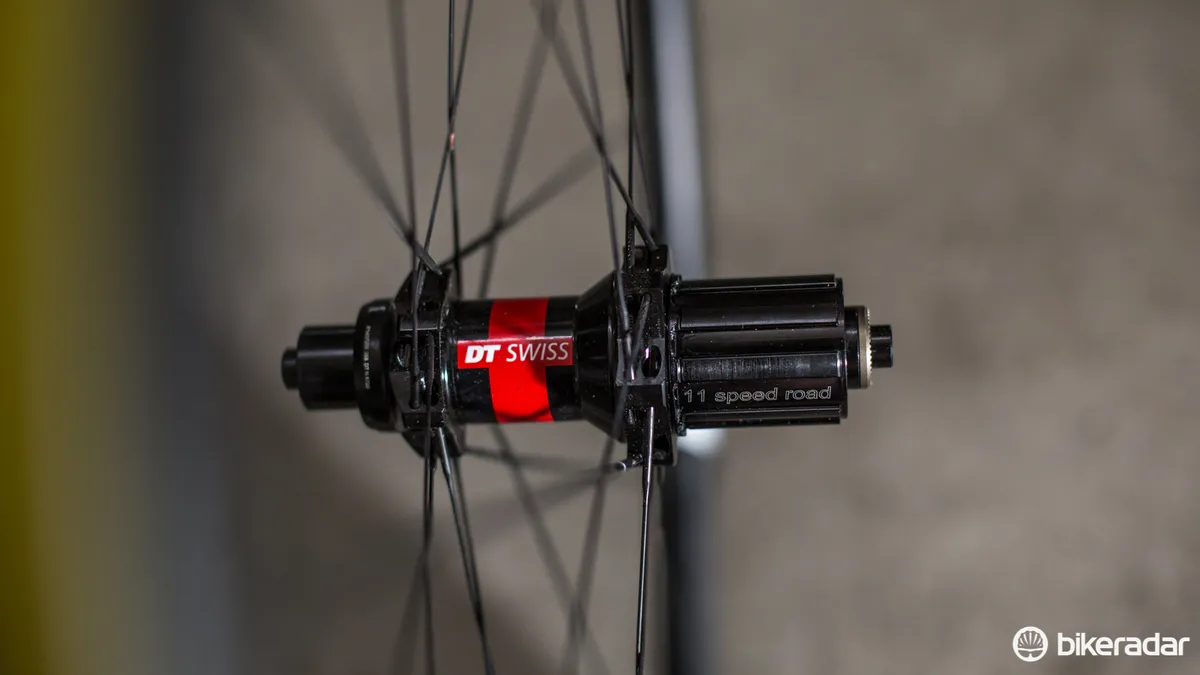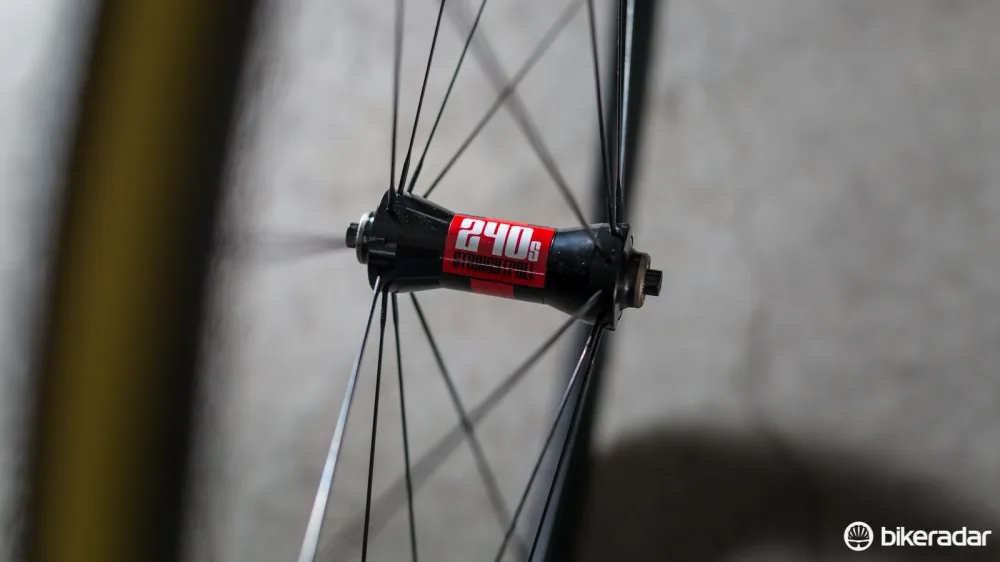Curve Cycling sprung onto the Australian scene a few years back offering open-mould Asian made rims, handbuilt in Melbourne into premium wheels.
At the time of writing Curve is selling mostly within Australia and the Asian market, but we understand the company will soon start with a UK distributor (prices are therefore TBC).
Nowadays there are literally hundreds of small ‘boutique’ wheel brands popping up to compete with the big names. Unfortunately, many of these smaller brands hide the fact that their rims are open mould and that little design work has been done.
Curve's a little different – there are no empty claims about the wheels being, ‘faster, stiffer, more aero, more compliant, blah, blah, blah’ – like some competitors are guilty of. Instead Curve uses a proven design and a unique layup, to let the wheels do the talking.
Who's behind Curve?
Before we get to the meat of the review, a little bit of information on Curve. Founded by Steven Varga and Jesse Carlson, Curve started as a hobby, which turned into an obsession, and then eventually a quality carbon wheel. Varga, who comes from a bike shop background began exploring the, ‘all carbon comes from the same factory’ theory, a project which paved the foundation for Curve. Carlson meanwhile is involved in carbon automotive wheels along with bike wheelsets, and has a PHD in physics – and is a pretty good mountain biker to boot.

Curve is committed to producing high quality products, and has gone to the time an effort to ensure their wheels can compete with the big names
While initially it might seem Curve is yet another brand pushing Asian-made rims on cheap hubs and pasting cool stickers around the rim, branding and sales director Adam Lana Curve’s insisted that this isn’t the case.
“Choosing an ODM [original design manufacturer] took trial and error, and we saw some terrible stuff come through. Delaminated wheels, bad wheel builds, basically products that were coming from factories or agents that actually had no interest or knowledge in cycling," he said.
“We found partners that were willing to work beside us to help bring our requests to life. [This took a lot of arm twisting] as we never paid for mould development ourselves – we basically had to talk them into it," he added. "It meant that at the start we lost our intellectual property rights, as the original moulds we helped create became open – we couldn't afford to license them.”
Once the manufacturing and design was worked out, Curve sought the advice of Raoul Luescher of Luescher Teknik, a highly regarded carbon expert, to conduct testing against products from the big brands.
“Our results were very comparable and confirmed that we were on to a good product to take to cyclists,” Lana added.
Curve has also spent the time and money to get its rims UCI approved for use in competitive racing, something many other brands making open mould rims cannot say.
The CC38s
The CC38’s are Curve's all around 38mm deep carbon clinchers. Taking cues from likes of Enve, Curve has opted for variable width, meaning the front wheel measures 25mm external (18mm internal) and the rear is 23mm external (16mm internal). Both wheels are finished with DT Swiss 240 hubs, Sapim CX-Ray spokes (20 front, 24 rear) and alloy nipples. A wider front rim is said to offer a better impact resistance as well as sharper steering, while the narrower rear shaves some rotational weight compared to the front.

After a ride in the wet, there was plenty of grit built up on our front brake
Buyer beware, the wide 25mm front rim only just fit in a late-model BMC SLR01, and pushed my old-gen SRAM Red front brake to its absolute limit. With the caliper all the way open there was hardly a millimetre between the brake pads and the rim – I sanded them down a touch for some extra wiggle room. Clearance over the top of the tyre was tight as well, with any bit of grit or dirt picked up by the wheel finding its way to the bridge of the caliper and annoyingly rubbing on the tire until it rubbed away – this was infuriatingly annoying in the wet. Of course, such issues likely do not exist on the latest bikes designed for use with the trend in wider wheels.
Despite this, following the ‘wider is better’ mantra, the 25mm front rim spread the casing of every tyre we fitted beautifully, and accentuated the tack-sharp handling characteristics of the BMC.
The CC38s are also tubeless ready, something still not commonplace for carbon clinchers, though you’ll have to source your own valves before you ditch the inner tubes.
With a snub nose rim profile, the mid-depth CC38’s are nearly unaffected by side winds – performing vastly better than a wheelset of a similar depth from a big name French brand we rode recently. The bullnose rim also benefits ride quality, giving the spokes a wider surface area to disperse the energy from bumps and impacts.
While they lack the snap of a set of climbing wheels, the 1527g (without skewers, including rim tape) CC38s nonetheless spin up quickly and hold speed even better. Compared with usual alloy low-profile rims, it only requires minimal effort to maintain a blistering speed along the flats. Neither Curve nor BikeRadar has taken the CC38’s into the wind tunnel, but there’s definitely some aero benefit on offer.

Our sample wheels were rolling on DT 240 hubs
Keeping everything rolling are a set of DT Swiss 240 hubs, which are pretty hard to fault. They’re über smooth, weight competitive, reliable and the tool free maintenance makes them pretty much the whole package. The Star Ratchet freehub system sounds pretty good at speed, too.
When it came to stopping the CC38s there were no surprises. Braking performance is, well, it’s braking on a carbon brake surface, so it’s expectedly ordinary – the same can be said for the wet. While they lack any initial ‘bite’, as the pads heat up the power ramps up in a stable and predictable manner.
Curve supplies its own branded brake pads, which to us look suspiciously like a Swiss Stop copy, providing consistent and squeal-free braking.
Each rim is tagged not only with the width and depth, but also with a max PSI and rider weight. As Curve's website has it, “Failure risk is increased the heavier the rider is, as heavier riders descend faster. Of course the heavier the rider is the harder the brakes work to slow that mass down and the more heat is generated. With the weight rating labelled on the rim, this is more closely related to heat rather than the material not actually being able to structurally hold more than that weight.”

Along with the brake pads, a set of skewers of lightweight (45g) external cam titanium skewers is included.
If you do manage to cook your rims, Curve will replace them at 50 percent of the retail cost, excluding the labour to string your hubs in the new rim – the firm also offers a two-year warranty and crash replacement program.
I’ve been riding the CC38s as my everyday wheelset for the last couple of months (the joys of being a bike tester). They’ve proven to be a fast rolling, and stiff wheelset I’d happily use on race day or on a weekend epic.
At AU$2,479, the CC38’s represent great value for money at a grand less than a set of Zipp 303 (AU$3699) clinchers and about half the price of the Enve SES 3.4 clincher with a DT Swiss 240 hub (AU$4149) here in Australia.
The CC38’s are a high performance race ready wheel at a price tag that will leave a little in your bank account to cover the costs of those competitive gran fondos.













